Lower back pain is a common phenomenon that occurs regardless of age, but more common in adults. There can be many reasons - from physiological factors to illness. Sometimes back pain comes on briefly and goes away quickly. However, pain in the lumbar spine can be a sign of serious illness, and in these cases it is imperative to see a doctor.
reasons
There are many causes of acute back pain, they are strictly individual for each person affected. The most important of these are diseases and changes in the spine, which can have irreversible consequences.
Basic (most common)
The most common reasons are:
- Osteochondrosis. An uncomfortable movement puts pressure on the roots of the nerve trunk of the spinal cord. Burning and nagging don't stop during the day, when you lift something heavy there is just hellish lower back pain.
- Disc herniation. Usually an inguinal hernia is located in the lower back, and any sudden movement of the trunk leads to compression of the nerve roots.
- Radiculitis. With lumbosacral radiculitis, a sharp pain syndrome occurs. It provokes heavy lifting or unsuccessful movements. A sharp pain restricts the patient's movements so much that they cannot straighten up and remain in the position they were in when the seizure occurred.
- Shifting the vertebrae. This problem is characterized by sharp pain in the lower back and a little less stiffness of movement. This pathology is associated with disorders of urination and bowel function.
- Facet Syndrome. As the facets of the intervertebral discs expand both above and below, the intervertebral foramen decreases. In this case, there are unpleasant sensations that appear suddenly and appear more than once a month. When leaning back, the patient feels back pain.
- Epidural abscess. The accumulation of pus in the spinal cord occurs due to infectious diseases of the urinary tract. In addition to pain, there are also fever, weakness and an increase in body temperature.
These are the causes - the consequences of diseases of the spinal cord.
The lower back can get sick due to the different leg lengths of 2-3 cm. It is difficult for a person to move. Because of the constant curvature of the spine, a pain can be felt in the back.
Overwork and physical fatigue
In addition to serious illnesses, severe pain in the lumbar spine can also be traced back to excessive strain and a sharp forward leaning of the trunk. This problem also arises when the temperature effect on the body is violated. The causes of this pain are:
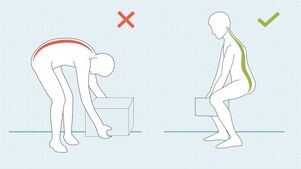
- Stretching the muscles. An exacerbation of the muscle load in the lower back occurs due to physical overload. Squeezing muscles causes pain and reduces mobility. This problem occurs with athletes and people who work hard.
- Neuralgia. Hypothermia of the back leads to neuralgia - irritation or compression of the nerves. The pathology manifests itself in several ways: sometimes in the form of seizures, accompanied by reddening of the affected area, tremors, tissue edema and profuse sweating.
- Myositis. Lumbar spine pain and discomfort begin at night, as well as with a sudden increase and change in weather conditions after hypothermia and overexertion.
Frequent colds, decreased immunity, spinal trauma after a blow or fall, both fresh and old, can provoke a seizure.
Disorders of the internal organs
Sometimes there is pain in the lumbar zone due to damage to other organs: heart, liver, kidneys, lungs, gallbladder. During inhalation, the pain syndrome from the lumbar region diverges along all nerve canals. Often the causes of this pathology are:
- Pyelonephritis. It is an infectious inflammation of the kidneys and urinary tract. Usually the pain is boring, but seizures occur with chills, weakness, nausea and vomiting, and a fever.
- Urolithiasis. The problem manifests itself in a sudden sharp pain that becomes unbearable with long walking and hard work. The attack is accompanied by nausea, vomiting, and blood in the urine.
- ectopic pregnancy. When the fallopian tube ruptures with a miscarriage, there is a sharp pain that radiates to the groin and rectum. The rupture is accompanied by loss of consciousness, and if the fallopian tubes miscarry, a hematoma forms in the abdominal cavity.
- Pelvioperitonitis. This is a temporary inflammatory process in the appendages of the uterus. A woman has excruciating pain in her groin and back. In addition to the existing unpleasant sensations, there are also chills, fever and palpitations.
- Tumors of different origins. Metastatic cancer causes painful seizures when pressure is placed on the nerve endings. Often there are no early signs of the disease.
Lesions of internal organs with severe pain in the lower back are more difficult to diagnose. Therefore, immediately contact a specialist or call an ambulance. In some cases, delay can lead to serious health problems and even death.
Almost all pregnant women feel pain in their lower back. This is due to the restructuring of the body and an increase in the load. Difficult or complicated work can also be the cause.
Symptoms of potential diseases
The pain syndrome most often occurs against the background of a pinched nerve, osteochondrosis, deformity and degenerative changes in the intervertebral discs, as well as irritation of the nerve roots. Muscle spasms can also cause back pain in the lumbar region. Features of the symptoms for various diseases:
- Changes to the lumbar vertebrae begin with lumbago. Acute pain can first be controlled with medication. However, mobility remains limited.
- With sciatica, the symptoms move downwards - on the top of the legs and buttocks. If there is no timely treatment, then the disease becomes a constant companion and can cause other diseases.
- Osteochondrosis leads to the development of other diseases of the spine. Therefore, pain can not only appear in the lower back, but also spread to the entire post.
- Scoliosis is characterized by curvature of the skeleton, degenerative changes. The chronic form can be asymptomatic, in other cases there is pain in the bones.
- Dull and pulling pains are typical of diseases of the internal organs (mainly the genitourinary system and kidneys), benign and malignant tumors.
- In spondylitis, the pain is dull, painful and initially very weak. At the onset of the disease, lower back pain begins, movements are restricted. Gradually, the state of health deteriorates, the inflammation becomes stronger, it becomes difficult to move, even minimal loads are difficult to give.
- With spinal tuberculosis, in addition to the pain, the body temperature rises. A person feels tired, weak, weak, appetite deteriorates. At night there is profuse sweating and frequent urination.
Views
Pain can only be localized in one place or "distributed" over the abdomen, spine and lower back. The symptoms are acute, in the form of lumbago, dull and painful, circumferential. It depends on the disease or the pathological process.
Pain can occur intermittently. Usually this is due to physical activity, physiological features and an exacerbation of chronic pathologies. Constant chronic pain occurs against the background of various diseases of the internal organs with vascular lesions and deformations of the musculoskeletal system.
Sharp
Sharp, severe, stabbing pains lead to limited mobility. During such attacks, a person freezes in one position and cannot move. Even a gentle stir increases the already unbearable pain. This syndrome is called lumbago. Such symptoms can appear after intense massage or hypothermia.
Whine
Painful pain accompanies chronic diseases that often occur with spondyloarthrosis. Symptoms usually appear at night, immediately after waking up, or after long periods of sitting in one position.
Pull and stupid
These painful sensations can last for a long time, they exhaust the person. Most of the time they can be tolerated. Blunt and pulling pains are unusual in osteochondrosis, more likely in diseases of the spine or damage to internal organs.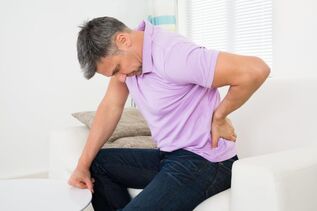 For example, the kidney tissue swells in pyelonephritis and the capsule expands, which causes back pain.
For example, the kidney tissue swells in pyelonephritis and the capsule expands, which causes back pain.
Shingles
Symptoms can appear in one place and spread across the entire peritoneal region and "spread" along the back. Belt pain affects the entire lower back. Without additional diagnosis, symptoms can be confused with diseases of the spine and joints. However, girdle pain usually causes internal organ pathology.
Pain localization
In ankylosing spondyloarthritis, symptoms mainly occur in the lower back. Basically, the pain occurs in the morning, it can even start late at night and gradually intensify and give way to the lower back. Ailments in the lower back are also associated with diseases of the pelvic organs, tailbone injuries, urological and gynecological diseases with the risk of miscarriage after childbirth.
In the upper part, the symptoms occur with kyphosis, trauma, muscle myositis, osteochondrosis, infectious processes or tumors. The cause can also be gastrointestinal diseases, gynecological diseases, kidney and heart diseases, pneumonia, pleurisy, influenza and ARVI.
Pain on the left or right side of the lower back occurs due to disorders of the central nervous system, diseases of the spine and internal organs. Symptoms appear on the side of the affected area. The appearance of negative sensations immediately on the left and right is accompanied by pleurisy, hepatitis, pneumonia, cholecystitis, inflammation of the prostate, and in women - the limbs.
Features in women and men
Some types of pain can only occur in women. For example, in gynecological diseases. Adnexitis is characterized by the appearance of discomfort in the lower abdomen. In this case, the pain sometimes radiates to the lower back. During pregnancy, the primary symptoms appear in the groin area and, due to increased stress on the spine, radiate to the lower back. 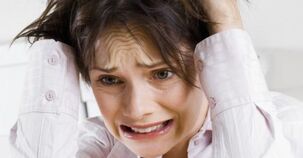 Lower back pain occurs during labor with the risk of miscarriage in late pregnancy.
Lower back pain occurs during labor with the risk of miscarriage in late pregnancy.
Menopause can be the cause of back pain in the lumbar spine when menstruation stops. The appearance of symptoms in the lumbar region is influenced by surges in estrogen levels, impaired blood flow, the initial stage of osteochondrosis, hernias and other diseases of the spine. The pain is also caused by stress, which women are more exposed to than men. In this case, the symptoms are periodic.
In men, back pain is more often associated with occupational activities and risks - great physical exertion, hypothermia, drafts. There are a number of diseases that cause the appearance of negative symptoms in the lower back. In prostatitis, pain occurs first in the anal area, but it can radiate backwards. Epididymitis is characterized by an inflammatory process. First, the pain occurs in the groin area, then it radiates to the lower back. At the same time, this is accompanied by an increase in temperature and swelling of the scrotum.
First aid
What to do if there is spontaneous hellish pain in the lower back? The following steps should be taken immediately:
- Give your back absolute rest.
- Take a comfortable position, ideally lying on a hard surface.
- You can put ice cream on your lower back, but first put it on a cheesecloth folded in 3-4 layers. This is only possible if the cause of the pain is not an organ infection.
- Apply a relaxing analgesic to the affected area.
- Take pain medication.
All of these activities will help you get rid of severe lower back pain quickly. However, it is necessary to consult and examine specialists to determine the real cause of this attack and prescribe appropriate treatment.
What not to do
If you experience sudden back pain, doctors advise against using warming ointments and gels immediately. They stimulate blood flow to the sore area, which contributes to an increase in swelling and then an increase in pain. Before visiting a doctor or the arrival of an ambulance, the following points are completely and categorically excluded:
- Perform exercises of your choice.
- Do not use contrast showers when washing in the sauna or steam room.
- Drink alcohol to relieve pain.
Only a doctor, after examination and diagnosis, has the right to prescribe treatment for a painful lower back.
What should I do next, which doctor should I see?
First you need to see a therapist. He conducts an initial examination, prescribes the necessary tests and sends him with the results obtained to a close specialist - a traumatologist, surgeon, neuropathologist. If the pain is associated with a malignant formation, then it is necessary to consult an oncologist. When pathologies of the gastrointestinal tract become the cause - a gastroenterologist with female ailments - a gynecologist, a man - a urologist or a proctologist.
Inspection and inspection
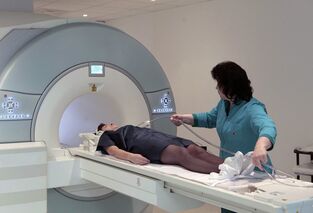
To find out why the lower back hurts, an initial visual examination is performed, followed by palpation. With its help, you can determine the localization of the symptom. The patient describes the type of pain, the duration of the seizures after which it might occur (fall, physical activity). A number of studies are also being carried out:
- Blood test. It can show inflammatory processes, the presence of infections, tumors.
- Urinalysis. Allows you to rule out kidney pathology. If the analysis is poor, an ultrasound is additionally prescribed.
- X-rays. Allows the identification of inflammatory processes, diseases of the spine, injuries, cracks, fractures and pinched nerves. Ideally, an x-ray of the spine and pelvic bones is done.
- CT. Tomography is more informative than X-rays, it can show small errors, a 3D image is created. In this case, all bone structures are clearly visible.
- MRI. Provides the opportunity to explore soft tissues within or near the spine. At the same time, the condition of the spinal cord, nerve roots, ligaments and muscles are checked. Hernias and vascular changes are clearly visible.
However, CT and MRI are only indicated if symptoms are severe. Usually, x-rays, ultrasound, and laboratory blood and urine tests are sufficient.
Basic therapy
If back pain is caused by problems with the spine, then comprehensive treatment of the pathology is applied. It includes the following activities:
- Organization of a gentle regime for the spine;
- perform manual therapy;
- application of a therapeutic massage;
- Physiotherapy and reflexology massages: acupuncture, UHF and others;
- drug therapy: drugs, ointment, blockade;
- wears a special corset if necessary;
- Perform therapeutic gymnastics.
The main focus is on drug therapy, which is primarily aimed at eliminating negative symptoms and relieving inflammation. As additional means, physical therapy, massage and exercise therapy are prescribed. Surgery may be necessary in difficult cases.
Drug treatment
Anti-inflammatory drugs are the first choice for back pain. They also relieve pain. At the same time, analgesics can be prescribed. Muscle relaxants are also prescribed. To reduce degenerative processes in the cartilage, chondroprotectors are prescribed. To relieve pain, drug blocks are sometimes done based on pain killers.
Topical ointments and gels are divided into the following types:
- Means based on nonsteroidal anti-inflammatory components.
- Combined preparations with anti-inflammatory effects and regeneration of tissue cells.
- anesthetics and irritants.
- Homeopathic remedies.
- Chondroprotectors that promote the restoration of cartilage tissue.
- massage products (cosmetics).
It is important to know that these methods relieve pain but cannot cure the root cause. For example, damage to the internal organs if back pain occurs for this reason. In this case, you should undergo an examination, and a specialist will prescribe effective treatment for this particular pathology.
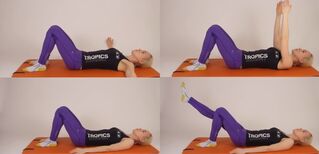
Exercise and massage
Movement therapy (therapeutic gymnastics) and massage are recommended to strengthen the muscular framework of the back, normalize blood circulation and increase tone. Exercise prevents back and back pain. The exercise therapy complex is selected individually. Massage increases the effectiveness of the exercises, restores the elasticity and flexibility of the ligaments. Combination with a bath or sauna is only permitted on medical advice.
Physiotherapy
Physiotherapy methods are prescribed only after acute attacks of lower back pain have been relieved. Then the procedures will help reduce or prevent the exacerbation. The following is used as physiotherapy:
- mud therapy;
- electrophoresis;
- balneotherapy;
- electrical muscle stimulation;
- phonophoresis (ultrasound);
- paraffin treatment;
- reflexology;
- amplipulse therapy.
The procedures help reduce swelling, achieve an analgesic effect, improve blood circulation, relax muscles and normalize metabolic processes and lymph flow.
Surgical
An absolute indication for an operation is cauda equina syndrome when urinary and fecal incontinence occurs and numbness occurs in the perineum. Surgery is also required if drug treatment is ineffective, lower back pain persists for more than six months, and it radiates to the legs. Surgical operations are also performed on hernias.

Folk remedies
In addition, folk remedies can be used - infusions, decoctions from medicinal herbs. Compresses are made (for example, from chopped onions, fresh burdock leaves, boiled potatoes with horseradish, mustard). To rub in a tincture of eucalyptus and burdock, warm honey, a mixture of cologne, red pepper, iodine and valerian is used. For internal use, a tincture of vodka with a saber or a brew of wheat with coriander and milk is recommended.
Expert recommendations
If the pain is felt for at least 3 months, it is considered acute pain. The following tips can help speed recovery from acute lower back pain and reduce its intensity:
- It is important to offer the patient 2-3 days of absolute rest. You need to go to bed and take a comfortable position: lie on your side and put a pillow between your knees, or lie on your back with a pillow under your knees. You cannot be stationary all day - it is recommended to get out of bed every 2-3 hours and warm up for 10-15 minutes.
- If pain cannot be tolerated, pain relievers and anti-inflammatory drugs should be taken regularly. If you only take them when the pain is increasing, you may not get the effect you want.
- A warm shower every 3 hours or a heating pad for 10-15 minutes or even a cold one will help - this will improve blood circulation, reduce pain and inflammation.
As you start to feel better, you should gradually return to your normal way of life. Prolonged lying on the bed contributes to muscle atrophy, which makes the disease worse. You can work out your body by walking or walking on the simulator - this is the simplest exercise for lumbar pain.
If back pain is not a disease in itself, it is a consequence of a serious illness that is present in the body. Therefore, you should immediately contact a medical institution to determine the pathology and competent treatment.

































